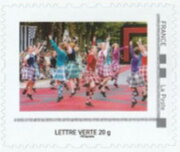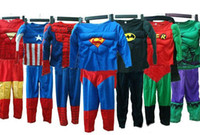Stamp: Lorient Interceltic Festival 2025. Scots Dancers (France 2025)
Lorient Interceltic Festival 2025. Scots Dancers (France 2025)
01 June (France ) within release Collector : Interceltic Festival Lorient 2025 goes into circulation Stamp Lorient Interceltic Festival 2025. Scots Dancers face value Lettre No Face Value
| Stamp Lorient Interceltic Festival 2025. Scots Dancers in catalogues | |
|---|---|
| Colnect codes: | Col: FR-COL 2025-19/2 |
Stamp is square format.
Also in the issue Collector : Interceltic Festival Lorient 2025:
- Souvenir Sheet - Lorient Interceltic Festival 2025 face value 8*LettreVerte20;
- Stamp - Lorient Interceltic Festival 2025. Cockney Hat face value Lettre;
- Stamp - Lorient Interceltic Festival 2025. Harpists face value Lettre;
- Stamp - Lorient Interceltic Festival 2025. Marine Drummers face value Lettre;
- Stamp - Lorient Interceltic Festival 2025. Poster face value Lettre;
- Stamp - Lorient Interceltic Festival 2025. Scots Dancers face value Lettre;
- Stamp - Lorient Interceltic Festival 2025. Scots Kilt face value Lettre;
- Stamp - Lorient Interceltic Festival 2025. Skirt face value Lettre;
- Stamp - Lorient Interceltic Festival 2025.Irish Dancing face value Lettre;
Stamp Lorient Interceltic Festival 2025. Scots Dancers it reflects the thematic directions:
Dance is an art form, often classified as a sport, consisting of sequences of body movements with aesthetic and often symbolic value, either improvised or purposefully selected. Dance can be categorized and described by its choreography, by its repertoire of movements or by its historical period or place of origin. Dance is typically performed with musical accompaniment, and sometimes with the dancer simultaneously using a musical instrument themselves.
A festival is an event celebrated by a community and centering on some characteristic aspect or aspects of that community and its religion or cultures. It is often marked as a local or national holiday, mela, or eid. A festival constitutes typical cases of glocalization, as well as the high culture-low culture interrelationship. Next to religion and folklore, a significant origin is agricultural. Food is such a vital resource that many festivals are associated with harvest time. Religious commemoration and thanksgiving for good harvests are blended in events that take place in autumn, such as Halloween in the northern hemisphere and Easter in the southern.
Music is an art form and cultural activity whose medium is sound organized in time. The common elements of music are pitch (which governs melody and harmony), rhythm (and its associated concepts tempo, meter, and articulation), dynamics (loudness and softness), and the sonic qualities of timbre and texture (which are sometimes termed the "color" of a musical sound). Different styles or types of music may emphasize, de-emphasize or omit some of these elements. Music is performed with a vast range of instruments and vocal techniques ranging from singing to rapping; there are solely instrumental pieces, solely vocal pieces (such as songs without instrumental accompaniment) and pieces that combine singing and instruments. The word derives from Greek μουσική (mousike; "art of the Muses"). In its most general form, the activities describing music as an art form or cultural activity include the creation of works of music (songs, tunes, symphonies, and so on), the criticism of music, the study of the history of music, and the aesthetic examination of music. Ancient Greek and Indian philosophers defined music as tones ordered horizontally as melodies and vertically as harmonies. Common sayings such as "the harmony of the spheres" and "it is music to my ears" point to the notion that music is often ordered and pleasant to listen to.
In clothing, a suit is a set of garments made from the same cloth, usually consisting of at least a jacket and trousers. Lounge suits (also known as business suits when sober in colour and style), which originated in Britain as country wear, are the most common style of Western suit. Other types of suit still worn today are the dinner suit, part of black tie, which arose as a lounging alternative to dress coats in much the same way as the day lounge suit came to replace frock coats and morning coats; and, rarely worn today, the morning suit. This article discusses the lounge suit (including business suits), elements of informal dress code.




